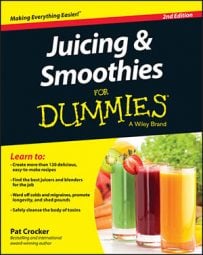If you’re making your health a top priority now, you’re not alone. Trends toward healthier options in all areas are peaking, with the biggest population bulge, the Baby Boomers, reaching 50 or older. And these trends are filtering down to younger generations as well, so that juicing and smoothies have become a significant part of a healthy daily diet.
According to the American Heart Association (AHA), heart disease is the number-one killer of Americans. The AHA says that you can reduce your risk of heart disease by the foods you eat and drink; it identifies seven health and lifestyle factors that impact health and quality of life. If you visit the AHA website, you can start getting healthy by checking out My Life Check. In the meantime, here are the AHA’s seven health factors:
Don’t smoke.
Maintain a healthy weight for your sex and age.
Engage in regular physical activity.
Eat natural, whole foods and avoid high-fat, high-sugar, fast, and refined-foods.
Manage your blood pressure, preferably by diet and exercise.
Watch and manage cholesterol.
Keep blood sugar, or glucose, at healthy levels.
In one way or another, juices and smoothies can help with many of these factors. One place to start to determine if juices or smoothies are a viable lifestyle option for you is to take the personal health questionnaire in the nearby sidebar. You can use it to gauge whether you’re getting the appropriate amounts of fruits and vegetables.

